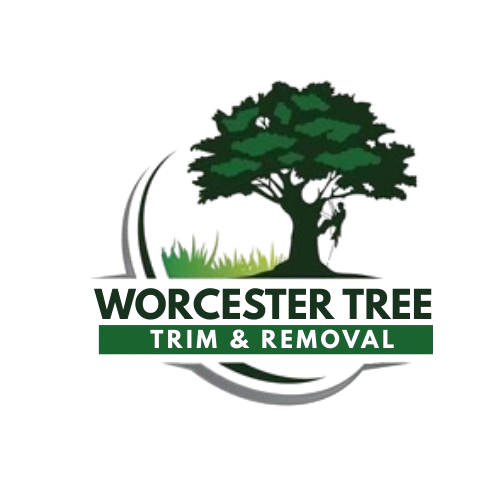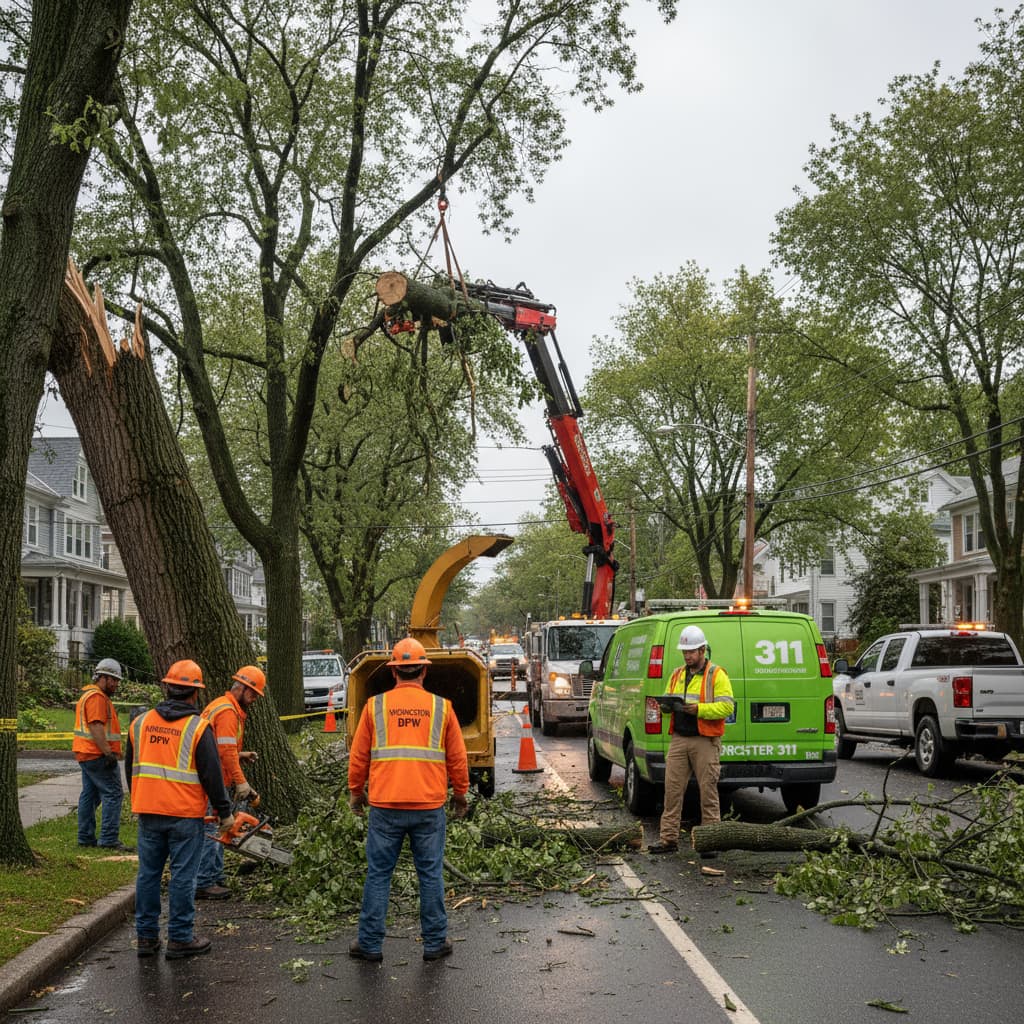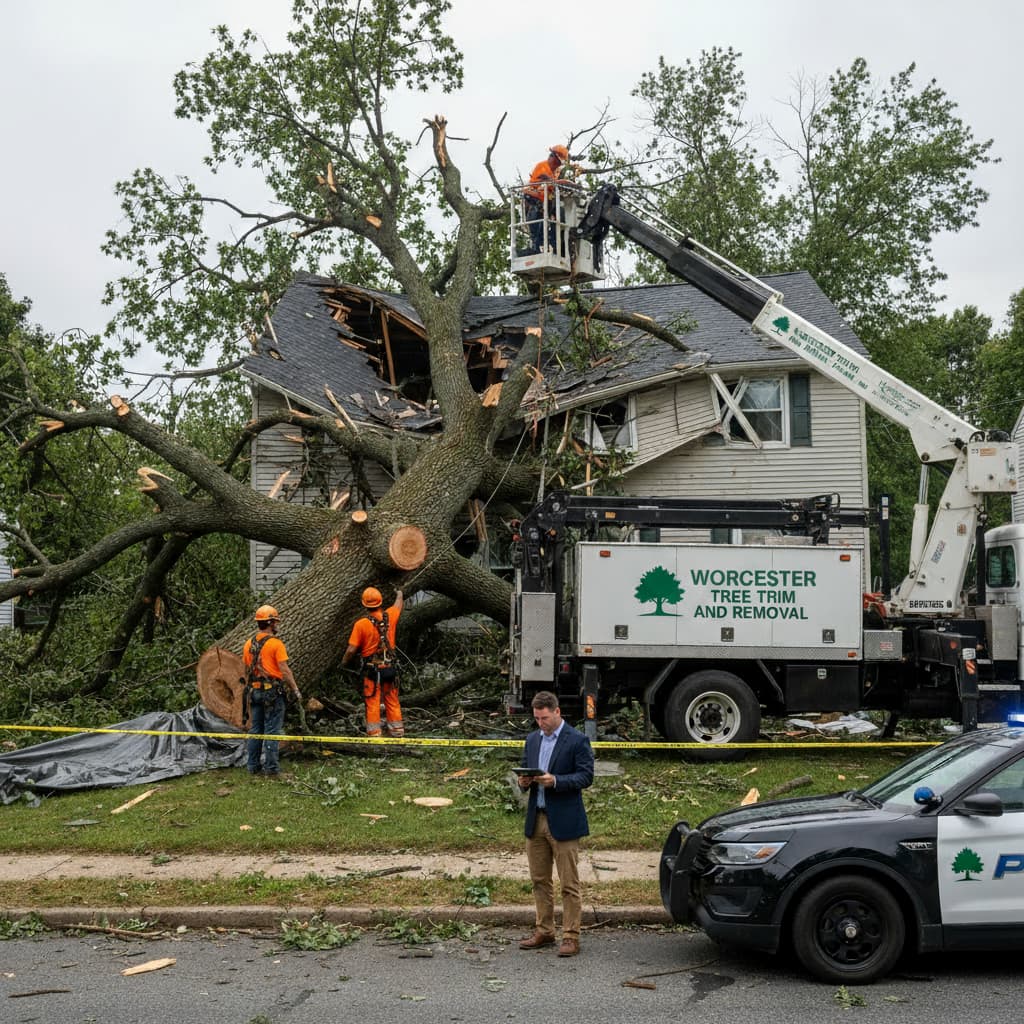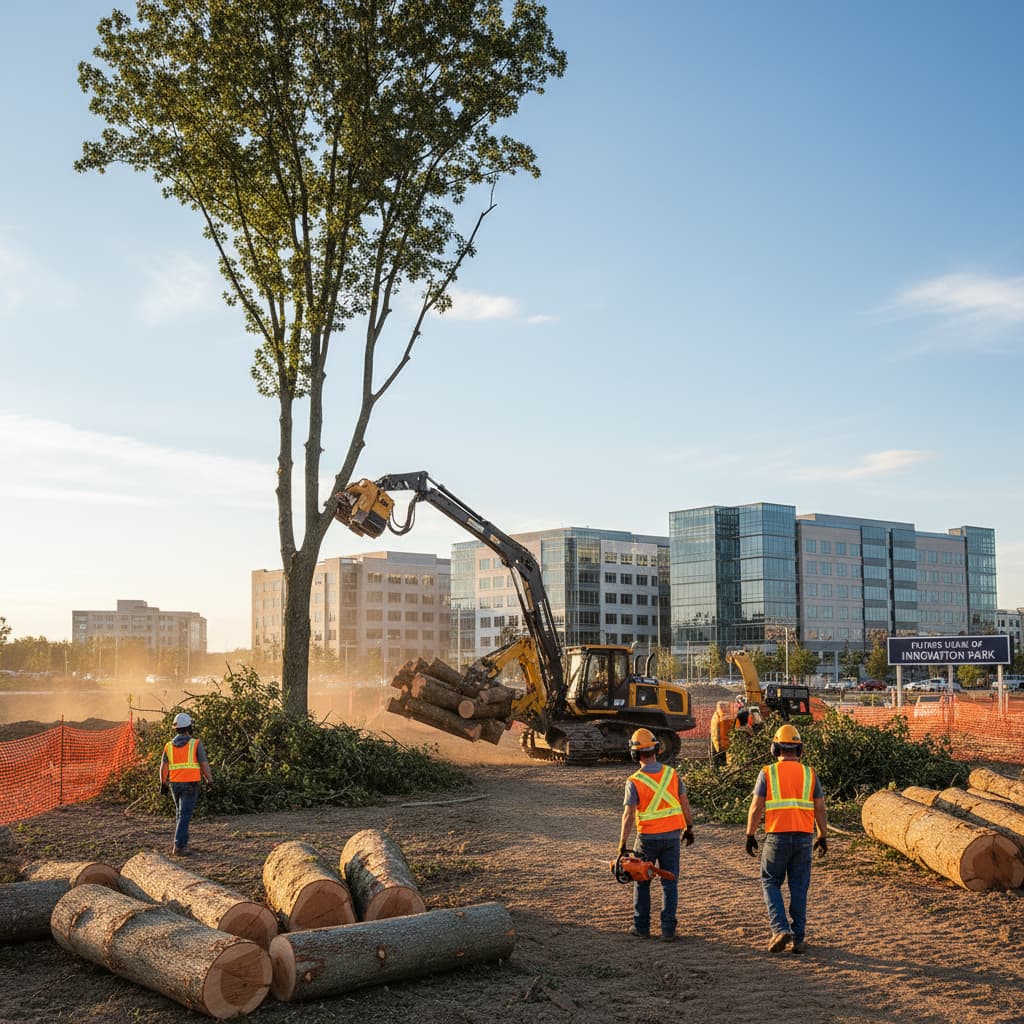
Cracked Foundation? How Tree Removal Can Help
Tree Removal Worcester
Worcester homeowners discovering foundation cracks often overlook a common culprit: mature trees planted too close to their homes decades ago. From the established neighborhoods surrounding College of the Holy Cross to properties near Green Hill Park, tree roots can silently compromise foundation integrity over the years, creating expensive structural problems that require both tree removal and foundation repair solutions. Understanding the connection between tree roots and foundation damage helps Central Massachusetts property owners make informed decisions about protecting their most valuable investment.
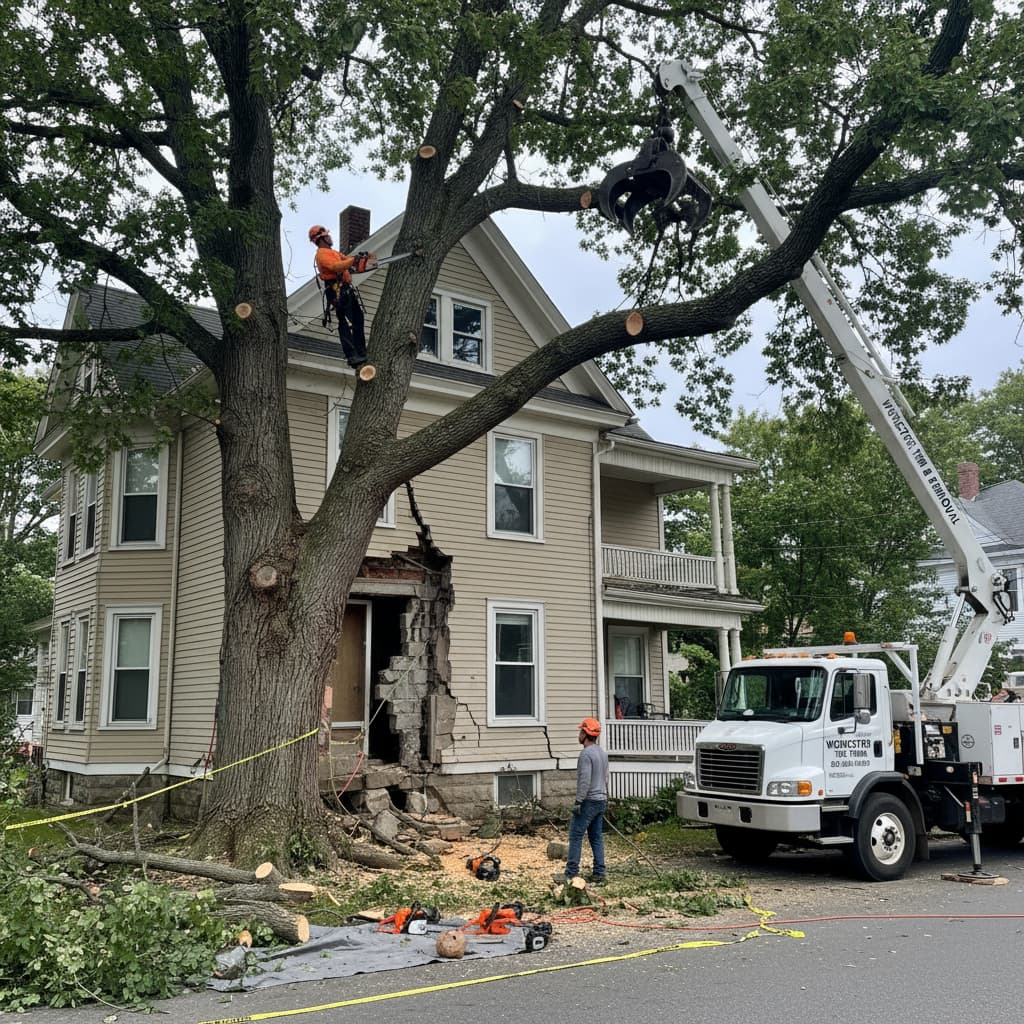
Understanding Tree Root Foundation Damage
Tree roots cause foundation problems through multiple mechanisms that develop gradually over time, making early detection challenging but critical for preventing major structural damage.
How Tree Roots Affect Foundations
Large tree roots don’t typically break through solid concrete foundations directly. Instead, they exploit existing weaknesses like hairline cracks, settling joints, or construction imperfections to gain access to moisture sources within foundation walls. Once established, roots expand and contract with seasonal moisture changes, gradually widening cracks and compromising structural integrity.
More commonly, tree roots damage foundations indirectly by altering soil conditions around the structure. Mature trees consume enormous amounts of water from surrounding soil, creating zones of desiccation that cause clay soils to shrink and shift. Worcester’s glacial clay soils are particularly susceptible to this type of movement, leading to differential settling that creates cracks and structural instability.
Root systems also create soil pressure against foundation walls as they expand. Large lateral roots from oak, maple, and other hardwood species common throughout Worcester can generate thousands of pounds of pressure against basement walls, causing bowing, cracking, and water infiltration problems.
Species Most Likely to Cause Problems
Worcester area properties frequently feature tree species with aggressive root systems that pose significant foundation threats. Silver maples, American elms, and willow trees develop extensive shallow root networks that spread far beyond their canopy diameter, often reaching foundation walls 50-100 feet from the tree trunk.
Oak trees, abundant throughout Crown Hill-Piedmont and other established Worcester neighborhoods, combine deep taproots with extensive lateral systems that can compromise foundations both through direct contact and soil moisture depletion. These valuable shade trees often reach maturity before homeowners recognize potential foundation risks.
Norway maples, commonly planted as street trees throughout Worcester, exhibit particularly aggressive root behavior, seeking moisture sources and exploiting foundation weaknesses. Their shallow, dense root mats can lift sidewalks, driveways, and foundation slabs while simultaneously drawing moisture from the soil supporting foundation walls.
Recognizing Signs of Root-Related Foundation Damage
Early identification of root-related foundation problems allows homeowners to address issues before they require extensive structural repairs or emergency tree removal services.
Interior Warning Signs
Foundation damage from tree roots often manifests first through subtle interior symptoms that gradually worsen over time. Hairline cracks appearing in basement walls, particularly near windows or where foundation walls meet floors, may indicate root pressure or soil movement from nearby trees.
Doors and windows that suddenly stick, bind, or refuse to close properly often signal foundation settling caused by soil moisture changes from large tree root systems. These symptoms typically worsen during dry periods when trees extract maximum moisture from the surrounding soil.
Uneven floors, separated trim work, or cracks appearing at ceiling corners can indicate differential foundation movement caused by tree root activity. Worcester’s older homes, particularly those built before modern foundation techniques, show these symptoms more readily than newer construction.
Exterior Foundation Indicators
Visual inspection around foundation perimeters reveals important clues about potential root damage. Cracks in foundation walls, particularly horizontal cracks or step-pattern cracks following mortar joints, often indicate lateral pressure from expanding root systems.
Basement window wells collecting water or showing signs of soil settlement may indicate root activity that has altered drainage patterns around the foundation. Tree roots can disrupt foundation drainage systems, creating moisture problems that compound structural damage.
Bulging or bowing foundation walls, though less common, represent serious root-related damage requiring immediate attention. These conditions typically develop over years but can progress rapidly once structural limits are exceeded.
When Tree Removal Becomes Necessary
Determining whether tree removal offers the best solution for foundation problems requires careful assessment of tree condition, root system extent, and severity of existing damage.
Distance and Risk Assessment
Trees planted within 20 feet of foundation walls pose elevated risks for root-related damage, particularly large-canopy species like oaks, maples, and elms. However, distance alone doesn’t determine risk level; root systems can extend 2-3 times beyond canopy spread, affecting foundations at considerable distances.
Foundation age and construction methods influence vulnerability to root damage. Worcester homes built before 1950 often lack modern moisture barriers and reinforcement techniques, making them more susceptible to root intrusion and soil movement effects.
Soil conditions around Worcester properties affect both root growth patterns and foundation stability. Clay soils that shrink dramatically during dry periods create ideal conditions for root-related foundation movement, while sandy soils may allow root systems to spread without generating equivalent foundation pressures.
Assessing Damage Severity
Minor foundation cracks measuring less than 1/4 inch wide and showing no signs of active movement may not require immediate tree removal, especially if trees provide significant landscape value or environmental benefits. Monitoring crack progression over seasonal cycles helps determine whether root activity is actively causing damage.
Progressive foundation damage, including widening cracks, new crack development, or symptoms of water infiltration, often indicates ongoing root activity that will continue causing problems until addressed. These situations typically require homeowners to search for tree removal near me to find qualified professionals who can prevent further foundation deterioration.
Emergencies involving significant foundation movement, major structural cracks, or water infiltration require immediate tree removal to stabilize conditions and prevent catastrophic foundation failure. Emergency tree removal services can often address these urgent situations within 24-48 hours.
Tree Removal vs. Alternative Solutions
Property owners facing root-related foundation problems can choose from several approaches depending on tree value, damage severity, and long-term property plans.
Root Barrier Installation
Root barriers installed between existing trees and foundations can redirect root growth away from structures while preserving valuable landscape trees. These plastic or metal barriers extend 2-4 feet deep and deflect roots downward rather than laterally toward foundations.
However, root barriers work best as preventive measures rather than solutions for existing damage. Trees with established root systems near foundations may already have caused damage that continues progressing despite barrier installation.
Installation costs for root barriers often approach tree removal expenses while providing uncertain long-term effectiveness. Large mature trees can eventually overcome barriers or develop root systems beyond barrier edges that still affect foundations.
Selective Root Pruning
Professional root pruning can eliminate specific roots causing foundation problems while preserving trees that provide significant landscape or environmental value. This approach works best for trees with localized root intrusion rather than extensive root systems affecting large foundation areas.
Root pruning requires careful assessment to avoid compromising tree stability or health. Removing too many roots can make trees unstable during storms or cause a gradual decline that necessitates removal within a few years.
Success rates for selective root pruning vary significantly based on tree species, age, and extent of root system development. Professional arborists can assess whether selective pruning offers viable alternatives to complete tree removal for specific situations.
Complete Tree Removal Benefits
Tree removal provides permanent solutions for root-related foundation problems while eliminating ongoing risks of further damage. Removal allows comprehensive foundation repair without concerns about future root interference or continued soil moisture depletion.
Complete removal also eliminates maintenance costs, storm damage risks, and insurance concerns associated with large trees near structures. Worcester homeowners often discover significant cost savings over time when tree removal eliminates repeated foundation repairs and preventive treatments.
Tree removal opens opportunities for foundation improvement projects, landscaping changes, or construction additions that would be impossible with large root systems present. Many Worcester properties benefit from replacing problematic large trees with smaller species planted at appropriate distances from foundations.
Professional Assessment and Planning
Successful resolution of root-related foundation problems requires professional expertise in both tree assessment and foundation evaluation to develop appropriate solutions.
Integrated Evaluation Approach
Foundation contractors and tree care professionals should coordinate assessments to determine the relationship between tree root systems and observed foundation damage. This integrated approach prevents misdiagnosis and ensures appropriate solutions for complex situations.
Soil testing around foundations can reveal moisture patterns and root activity that help determine whether tree removal will solve foundation problems or if additional measures are necessary. Worcester’s varied soil conditions require local expertise for accurate assessment.
Professional tree assessment includes evaluation of root system extent, tree health, and species characteristics that affect foundation risk. Certified arborists can predict root growth patterns and assess whether removal offers adequate solutions for foundation protection.
Timing Considerations
Emergency tree removal may be necessary if foundation damage poses immediate structural risks or continues progressing rapidly. However, most root-related foundation problems develop gradually and allow time for proper planning and assessment.
Coordinating tree removal with foundation repair work often provides cost advantages and better outcomes than addressing problems separately. Removal before foundation repair prevents root interference with repair work and eliminates future risks.
Seasonal timing affects both tree removal costs and foundation repair scheduling. Worcester weather patterns influence soil conditions and equipment access that affect project timing and costs for both tree removal and foundation work.
Preventing Future Foundation Damage
Learning from root-related foundation problems helps Worcester homeowners make better decisions about future landscaping and tree placement to protect foundation investments.
Appropriate Tree Selection and Placement
New tree plantings should maintain minimum distances from foundations based on mature size projections and root system characteristics. Small ornamental trees can be planted closer to structures than large canopy trees that develop extensive root systems.
Species selection significantly affects foundation risk levels. Trees with deep taproots and compact root systems pose fewer foundation threats than those with aggressive lateral root development. Local nurseries and arborists can recommend appropriate species for specific site conditions.
Consider mature tree size when planning new plantings, allowing adequate space for both canopy development and root system spread. The rule of planting trees at distances equal to mature canopy spread provides basic guidance, though specific species characteristics may require greater separation.
Ongoing Monitoring and Maintenance
Regular foundation inspections can identify root-related problems before they require major repairs or emergency tree removal services. Annual inspections during different seasons help detect progressive damage and moisture-related changes.
Professional tree assessments every 3-5 years can identify developing problems with root systems before they affect foundations. Certified arborists can recommend preventive measures or early interventions that avoid future removal.
Worcester Tree Trim and Removal provides comprehensive assessments that evaluate both immediate tree removal needs and long-term foundation protection strategies. Our expertise in Central Massachusetts soil conditions and tree species helps homeowners make informed decisions about protecting their foundation investments while maintaining valuable landscape features.
